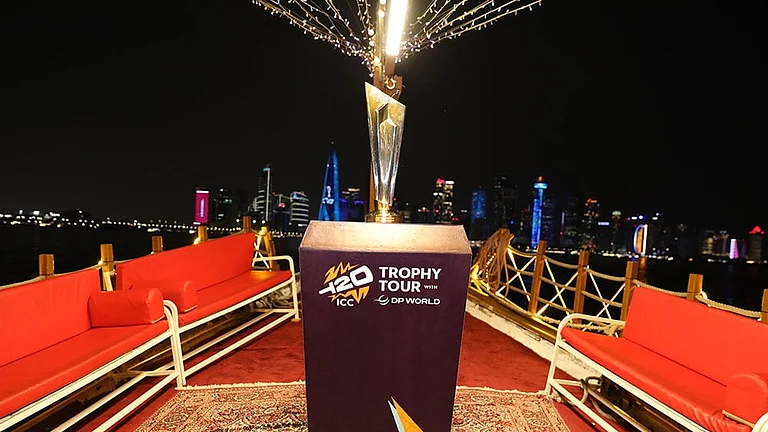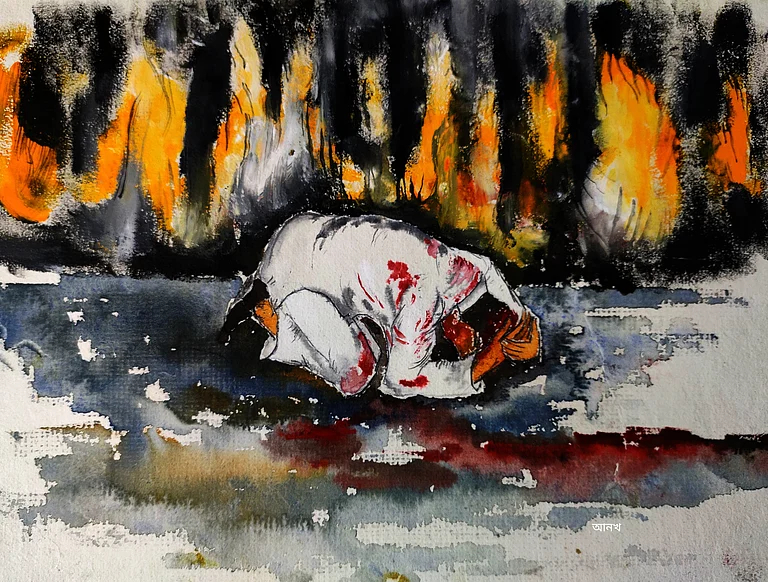I had first seen her as a child, on a big screen in a theatre as an elegant American woman photographing ‘Gandhi’ (1982). With every viewing of Richard Attenborough’s classic over the next several decades, something new was added to my response to her. As a teenager, with my imagination all fired up with the Indian national movement that I loved to read about in my history syllabus at school, I found it unfair that Attenborough could give space to her in his film and not Netaji. As a partition scholar in my 20s and 30s, I admired her iconic photographs of the India of 1946-1947, which are now widely available on the internet. But it is only in February, while listening to a conversation on Sunil Janah that I discovered a whole new aspect of Margaret Bourke-White.
‘Sunil Janah: Making a Photograph’
On February 4, the Experimenter Gallery, Kolkata, organised an online event to shed more light on ‘Sunil Janah: Making a Photograph’ — their ongoing exhibition at Ballygunge Place, focussing on the industrial photography of Janah. Ram Rahman and Arjun Janah were in conversation with Prateek Raja, with Priyanka Raja moderating the Q&A session at the end. I had registered for and seen the exhibition in the online viewing room on the 3rd and it had whetted my appetite to learn more about this aspect of Janah’s work. But I was in for a surprise.

Like most people, I am aware of Janah’s documentation of the 1943 Bengal Famine and am keen on using some of his images for the Virtual Kolkata Partition Museum that I, as part of a team, am currently working on. I have always marvelled at how much we owe to the “commissioned” work by the Communist Party for preserving the cultural memory of that blighted moment in our history. Jainul Abedin, Chittoprosad, Somnath Hore, all conscientious artists, produced searing artworks that were both a personal response to the famine as well as political work done at the party’s behest.
It is once again the Communist Party that played a catalytic role in bringing about a wonderful collaboration of Janah and Bourke-White. Ram Rahman emphasized this collaboration while contextualising Janah’s post-independence industrial photography in the light of his earlier work in the 40s, which had already a wide range and included dance photography.
In the works displayed at Experimenter, Nehruvian India, with its accent on development and industrialisation, comes alive. The curatorial note tells us that
Janah travelled the subcontinent photographing the massive projects birthed at the time. Majestic structures of iron and steel plants in Bhilai and Rourkela, coal mines in Bihar, fascinating images of the ports, factories and mills in Bengal amongst others that were designed to catapult India into modernity, each image an outstanding composition, a painterly marker of the time the new nation had stepped into.

Some of these stunning photographs were shared with the audience during the online conversation on February 4. And after Ram Rahman’s presentation, in the second part of the programme, Arjun Janah shared many anecdotes about his father’s life; and also talked at length about previous Exhibitions on him (among them, one curated by Ram Rahman in New York), and the archiving of his work in his website, suniljanah.org.

What has stayed with me, after three weeks, is the part on the friendship between Bourke White and Janah. Rahman shared two beautiful photographs that are a testament to that bond. In one, the famed photographer has herself been photographed by her Indian friend. She looks down — sideways — from a raised platform, with the sky as backdrop and wind in her hair, holding on to the camera that defines her. There is a radiance about her that speaks of both confidence and warmth. I could not take my eyes off her. In another, the two friends are part of a trio sitting together in (what looks like) an informal setting, but look a tad conscious.
Margaret and Sunil
When Bourke-White came to India, in the closing years of British rule, she was the most famous photographer in the world, with a formidable work experience: starting out her practice with industrial photography in Cleveland in the late 1920s, her eventual association with ‘Fortune’ and then ‘Life’ magazine had allowed her to photograph a wide range of subjects, from the Dust Bowl and Depression in America in the 1930s to Soviet industry in the early 1940s. She also extensively covered the Second World War in Europe.
But in India, she sought out Janah, who had by then already made a name for himself, and they were introduced to each other by P.C. Joshi in Bombay. Ten years apart in age, they struck up an instant friendship, and soon became collaborators. It also did not take long for Janah to realise that her style of working was similar to his, but “she was a more advanced version of himself”.

An anecdote from this phase stood out for me. They were covering a famine in Andhra — he for the Communist Party in India and she for ‘Life’ Magazine. They had the same assignment, but not the same resources. Janah, among other challenges, did not have flash in his camera and would use hers, by shooting together: she would be “making her picture, with her flash, connected to her camera”, but he would also simultaneously be making “his picture, by just keeping his shutter open, at the same time that she fired her flash. So, it was her flash which exposed his film… in the interiors of these huts, photographing the peasants who were starving.”
This moment, in Rahman’s eloquent recounting, struck me as the ultimate example of camaraderie and solidarity. Bourke-White came from the capital of the capitalist world; while Janah was sworn to a communist ideal in a country still under colonial subjugation — but their aim was the same: to authentically capture the reality of their times. In this, they were true comrades.
This somehow reminded me of another comradeship in a different sphere of cultural activity in the India of the 1940s — that of Ismat Chughtai and Saadat Hasan Manto. Contemporary Urdu writers of the time, they had both made their mark in the genre of the short story; and carrying over their friendship from Aligarh Muslim University (brought about by Chughtai’s husband Shaheed Latif) and their involvement in the Progressive Writers’ Association, both worked for the Hindi film industry when based in Bombay (now Mumbai). However, the most important factor that was common to them was the obscenity charges that they faced for their work (Manto much more than Chughtai) and the way that affected their subsequent reputations.
In my mind, Bourke-White and Janah using the same flash to portray one reality, hunger-stricken peasants, seemed equivalent to Chughtai and Manto going to court together in Lahore, to defend their portrayal of their social reality (in the short stories ‘Lihaaf’ and ‘Bu’, respectively).
Such remarkable and rare collaborations/friendships need to be remembered and celebrated.
Photos Courtesy: Experimenter Kolkata

























